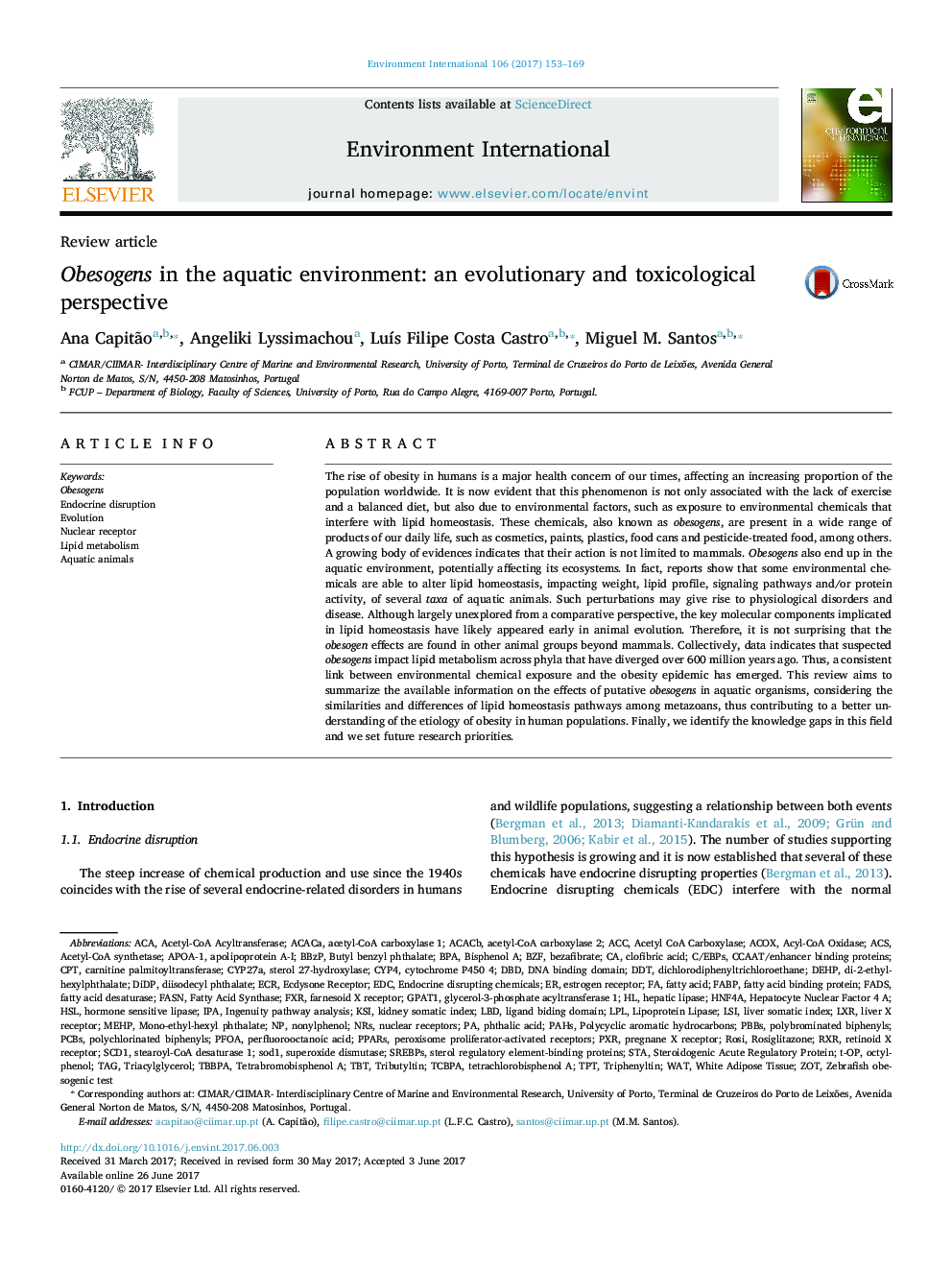| کد مقاله | کد نشریه | سال انتشار | مقاله انگلیسی | نسخه تمام متن |
|---|---|---|---|---|
| 5748366 | 1619024 | 2017 | 17 صفحه PDF | دانلود رایگان |
- A set group of chemicals (obesogens) causes dysregulation of the lipid homeostasis.
- Several phylogenetic distinct groups are affected by obesogens.
- Obesogens can act through the interaction with different Nuclear Receptors.
- Elucidating the MOA of obesogens in different taxa helps understanding the obesity epidemic.
The rise of obesity in humans is a major health concern of our times, affecting an increasing proportion of the population worldwide. It is now evident that this phenomenon is not only associated with the lack of exercise and a balanced diet, but also due to environmental factors, such as exposure to environmental chemicals that interfere with lipid homeostasis. These chemicals, also known as obesogens, are present in a wide range of products of our daily life, such as cosmetics, paints, plastics, food cans and pesticide-treated food, among others. A growing body of evidences indicates that their action is not limited to mammals. Obesogens also end up in the aquatic environment, potentially affecting its ecosystems. In fact, reports show that some environmental chemicals are able to alter lipid homeostasis, impacting weight, lipid profile, signaling pathways and/or protein activity, of several taxa of aquatic animals. Such perturbations may give rise to physiological disorders and disease. Although largely unexplored from a comparative perspective, the key molecular components implicated in lipid homeostasis have likely appeared early in animal evolution. Therefore, it is not surprising that the obesogen effects are found in other animal groups beyond mammals. Collectively, data indicates that suspected obesogens impact lipid metabolism across phyla that have diverged over 600 million years ago. Thus, a consistent link between environmental chemical exposure and the obesity epidemic has emerged. This review aims to summarize the available information on the effects of putative obesogens in aquatic organisms, considering the similarities and differences of lipid homeostasis pathways among metazoans, thus contributing to a better understanding of the etiology of obesity in human populations. Finally, we identify the knowledge gaps in this field and we set future research priorities.
110
Journal: Environment International - Volume 106, September 2017, Pages 153-169
